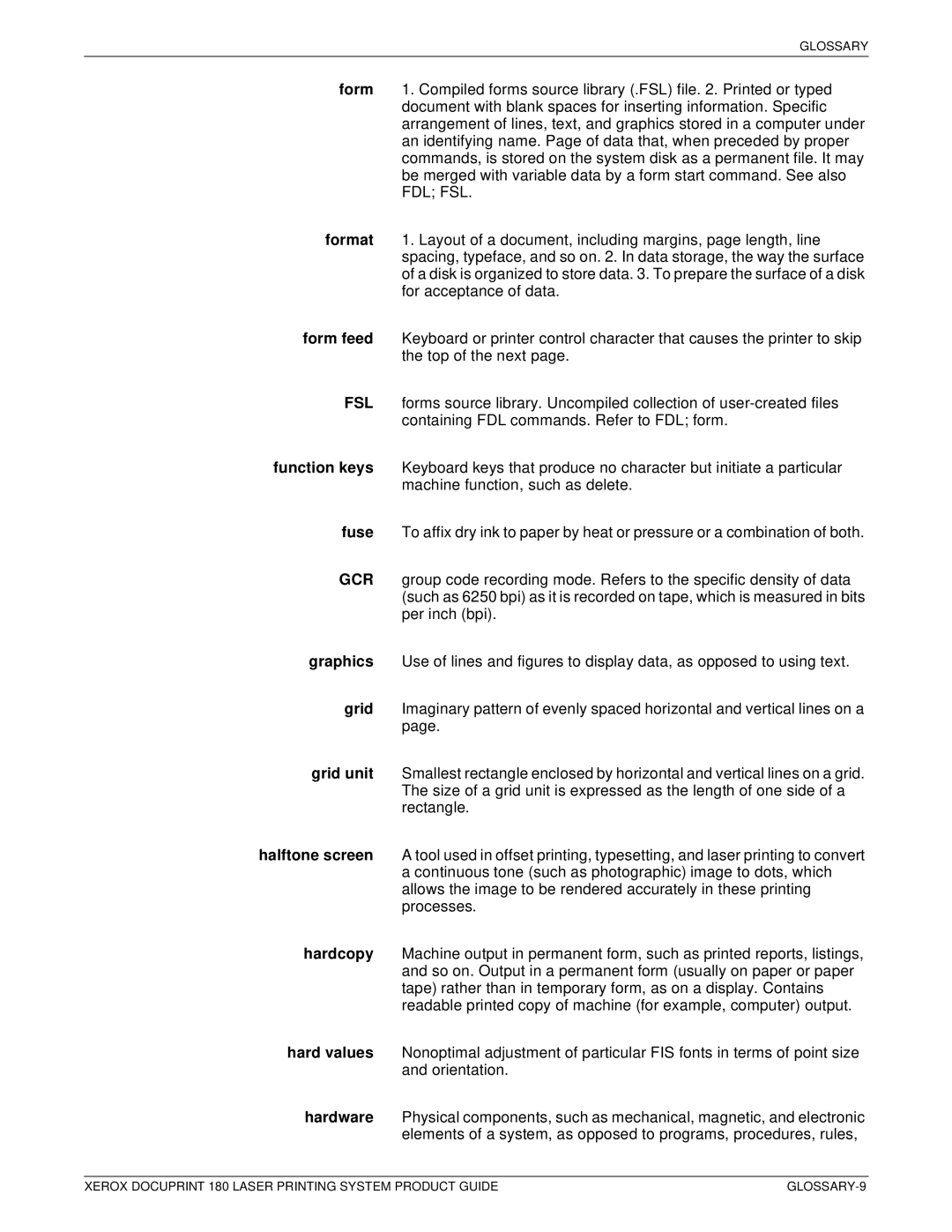
GLOSSARY
form 1. Compiled forms source library (.FSL) file. 2. Printed or typed document with blank spaces for inserting information. Specific arrangement of lines, text, and graphics stored in a computer under an identifying name. Page of data that, when preceded by proper commands, is stored on the system disk as a permanent file. It may be merged with variable data by a form start command. See also FDL; FSL.
format 1. Layout of a document, including margins, page length, line spacing, typeface, and so on. 2. In data storage, the way the surface of a disk is organized to store data. 3. To prepare the surface of a disk for acceptance of data.
form feed Keyboard or printer control character that causes the printer to skip the top of the next page.
FSL forms source library. Uncompiled collection of
function keys Keyboard keys that produce no character but initiate a particular machine function, such as delete.
fuse To affix dry ink to paper by heat or pressure or a combination of both.
GCR group code recording mode. Refers to the specific density of data (such as 6250 bpi) as it is recorded on tape, which is measured in bits per inch (bpi).
graphics Use of lines and figures to display data, as opposed to using text.
grid Imaginary pattern of evenly spaced horizontal and vertical lines on a page.
grid unit Smallest rectangle enclosed by horizontal and vertical lines on a grid. The size of a grid unit is expressed as the length of one side of a rectangle.
halftone screen A tool used in offset printing, typesetting, and laser printing to convert a continuous tone (such as photographic) image to dots, which allows the image to be rendered accurately in these printing processes.
hardcopy Machine output in permanent form, such as printed reports, listings, and so on. Output in a permanent form (usually on paper or paper tape) rather than in temporary form, as on a display. Contains readable printed copy of machine (for example, computer) output.
hard values Nonoptimal adjustment of particular FIS fonts in terms of point size and orientation.
hardware Physical components, such as mechanical, magnetic, and electronic elements of a system, as opposed to programs, procedures, rules,
XEROX DOCUPRINT 180 LASER PRINTING SYSTEM PRODUCT GUIDE |
|
